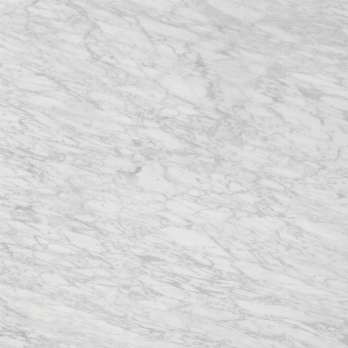Gioia Veinè Brouillè
carriere d'origine
Gioia
Carrara, Italie
Petrografic name (according EN 12407): Marble
Macroscopic description: A medium-fine-grained, white lithotype with more or less dark grey veins, of sub-millimetric thickness and non-homogeneous orientation, and grey veins of centimetric size associated to opaque minerals up to millimetric in size. It is a compact material with no surface porosity. Minute pyrite crystals may occur too.
Les suivantes donnèes techniques n'offrent qu'une indication gènèrale des vèritables caractèristiques du matèriel. Etant donnè qu'il s'agit d'un produit naturel, nous vous conseillons de bien vouloir rèpèter les tests afin de confirmer et ajourner les donnèe mêmes. La sociètè décline toute responsabilitè pour tout usage abusif.
Physical mechanical characteristics
| STANDARD | U.M. | MEAN VALUE | ST. DEV. | |
 EN 13755-08 EN 13755-08 |
Water absorption at atmospheric pressure | % | 0,11 | 0,01 |
 EN 1936-07 EN 1936-07 |
Apparent Density | KG/m3 | 2710 | 4,1 |
 EN 1936-07 EN 1936-07 |
Open porosity | % | 0,3 | 0,02 |
 EN 12372-07 EN 12372-07 |
Flexural strength | |||
| (in natural conditions) | MPa | 18,1 | 1,2 | |
| (EN 12371-03 exposed to 48 frost cycles | MPa | 15,6 | 2,3 | |
 EN 1926-07 EN 1926-07 |
Uniaxial compressive strength | MPa | 127,3 | 6,7 |
 EN 14231-04 EN 14231-04 |
Slip resistance (honed finishing) | |||
| (dry) | USRV | 69 | 2 | |
| (wet) | USRV | 32 | 1,6 | |
Block and slab characteristics
Average size of blocks: 3,00 x 1,70 x 1,70m.
Slabs are preferably cut against the grain or perpendicular to the grain, i.e. the hard way or the easy way.
 Du découpage de blocs
Du découpage de blocs  Lavoration de surface
Lavoration de surface
 Du découpage de blocs
Du découpage de blocs  Lavoration de surface
Lavoration de surface
Microscopic description according to EN 12407 e EN 12460
| A crystalloblastic metamorphic lithotype that is vaguely iso-oriented where the veins occur and is composed of subeuhedral and euhedral blasts with sutured, straight and sometimes curved grain boundaries. The mosaic is seriate (from 70 to 600 µm) with the occasional presence of plurimillimetric nodules (7 mm) of a relict appearance, composed of calcitic crystals with interlobated or ameboidal grain boundaries that are deformed and with abundant submicroscopic inclusions of opaque minerals. Veins occur from µm to mm in size in which calcitic blasts (from 30 to 200 µm) can be observed clouded by abundant opaque minerals, rare blasts of poikilitic quartz, feldspars and rhombic dolomite clouded by microgranulations of opaque minerals. There are also pyrite crystals (< 200 µm), that are particularly abundant where the veins occur. |



